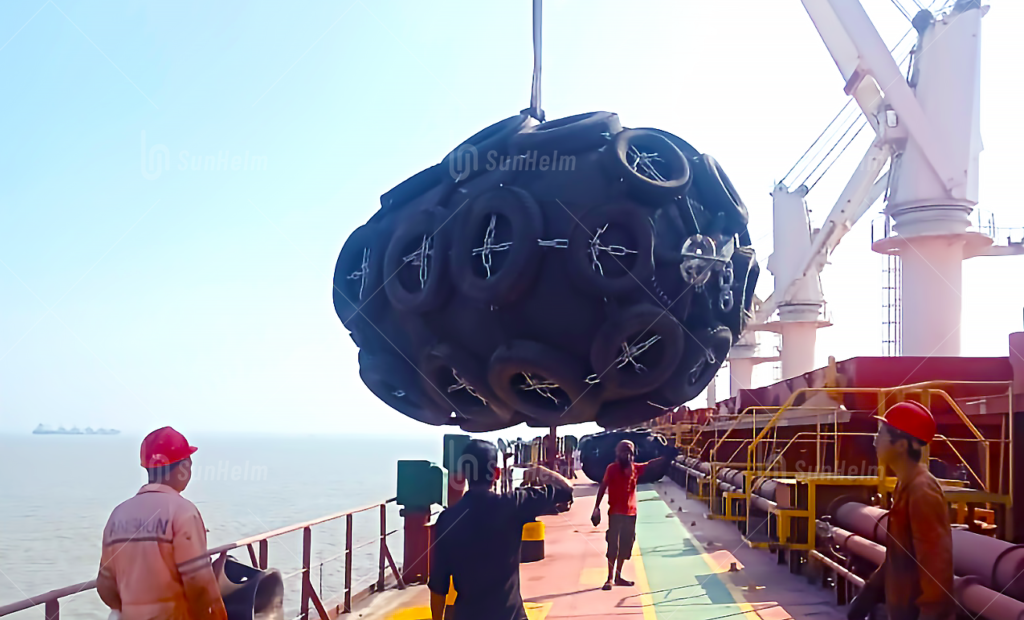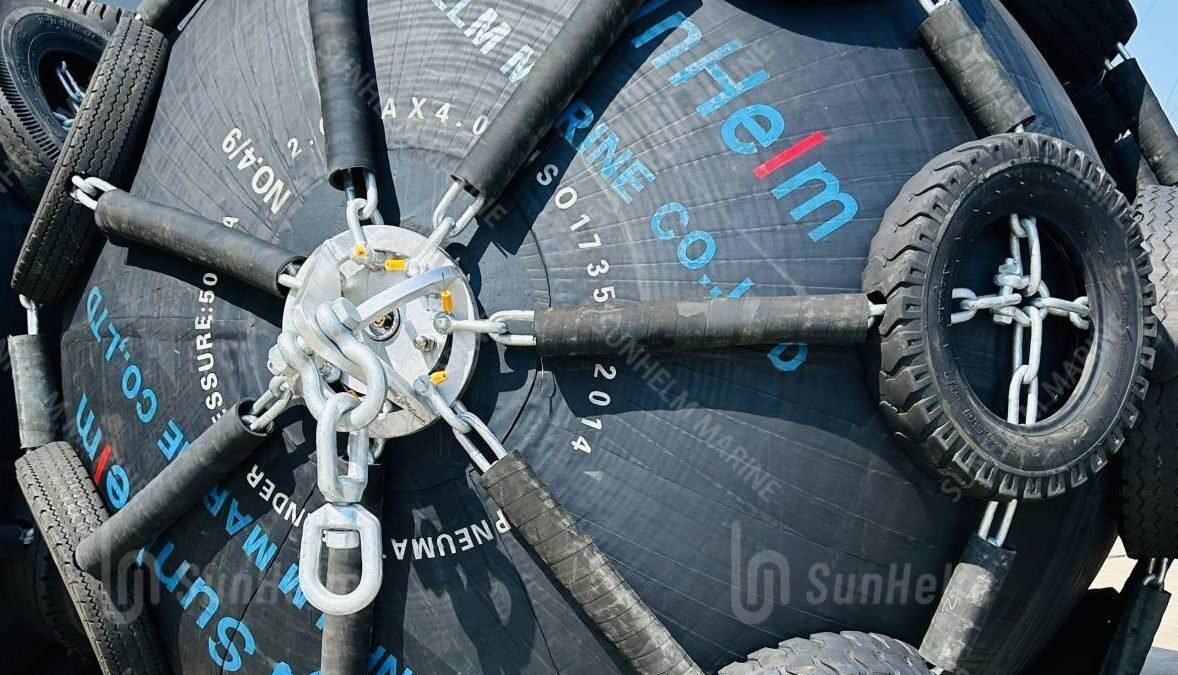1. Introduction
Pneumatic rubber fenders, also called Yokohama fenders or floating fenders, help protect ships and docks during berthing. These pneumatic rubber fenders float on the water and absorb the energy from ship movements. As a result, they reduce impact and prevent damage. Because of their excellent energy absorption, low reaction force, and ability to float with water level changes, many port operators choose them for ship-to-ship (STS) and ship-to-dock operations.

2. Key Factors for Choosing the Right Pneumatic Fenders
1. Energy and Reaction Force
When you choose a fender, you must check if it can absorb the ship’s berthing energy. At the same time, it must keep the reaction force low to protect the hull and dock. Engineers usually apply standard formulas along with correction factors for speed, temperature, angle, and manufacturing tolerance. These help ensure the fender performs safely and reliably.
2. Basic Size Guide
To make selection easier, here’s a quick reference table:
| Ship Type | Displacement (tons) | Speed (m/s) | Energy (ton·m) | Suggested Size (D × L) | Quantity |
|---|---|---|---|---|---|
| Oil Tanker | 30,000 | 0.25 | 40 | 3.3 × 6.5 m | ≥4 |
| LPG Ship | 20,000 | 0.25 | 61 | 3.3 × 6.5 m | ≥3 |
Always check the latest data from your supplier, as sizes may vary depending on ship type and berthing speed.
3. Fender Type and Material
According to ISO 17357, pneumatic fenders fall into four types:
- Type I: Chain & Tyre Net
- Type II: Sling Type
- Type III: Rib Type
- Type IV: Rope Net
Each type suits different needs. For example, Type I provides strong external protection with its tire net, while Type II is lighter and easier to handle. These pneumatic rubber fenders usually contain several layers: an outer rubber shell, a tough inner lining, strong reinforcement cords, and built-in flanges with safety valves.
Therefore, always choose high-quality materials. Avoid cheap alternatives made with recycled rubber or poor fabric, as they may wear out faster and pose risks.
4. Match Fender to Ship and Conditions
In addition, consider the ship’s type, size, and berthing location. Water depth, tide changes, wave action, and approach angles all affect fender performance. In ports with big tidal changes, floating fenders like these are a better choice because they move with the water and stay in the right position.
3. How to Arrange and Install Pneumatic rubber Fenders
1. Fender Spacing
To get the best protection, you need to space the pneumatic rubber fenders correctly:
- For ships under 20,000 tons, space pneumatic fenders about 5–10% of the ship’s length apart.
- For larger ships, space them 25–50% of the ship’s length apart.
This layout ensures the hull stays protected across the full contact area. Moreover, proper spacing prevents gaps and reduces uneven pressure.
2. Installation Tips
Before installing, clean the dock surface and prepare anchor points. Then, attach the pneumatic rubber fenders using chains, slings, or brackets, depending on their design.
For large fenders, use pressure gauges and safety valves to control inflation. Also, make sure the fenders sit at the correct height and position, following ISO 17357 guidelines. As a result, your system will work better and last longer.
3. Fender Placement Tips
Pneumatic rubber fenders should be placed where the ship is most likely to make contact. For more safety, you can install extra “secondary fenders” at critical points, especially when tide levels or ship drafts change during berthing. This setup helps reduce stress and improves protection.
4. Maintenance and Safety Tips
Good maintenance keeps fenders working well for many years. Here’s what you should do:
- Check air pressure regularly and top it up if needed.
- Look for cracks, wear, or broken parts, especially on tire nets and chains.
- Replace worn-out components right away.
- During storage, keep fenders slightly inflated and away from direct sunlight or heat.
By doing these simple tasks, you prevent damage and avoid costly failures.
5. Conclusion
In short, choosing and installing the right pneumatic fender takes planning. You must consider ship size, berthing energy, water conditions, and how the fender will be used. Once you make the right choice, make sure to install it correctly and maintain it regularly.
A good fender system will protect your ship and dock for many years. So, take the time to understand your needs and talk to experienced suppliers. If you need help with drawings, technical specs, or product options, feel free to ask — we’re ready to support you.


